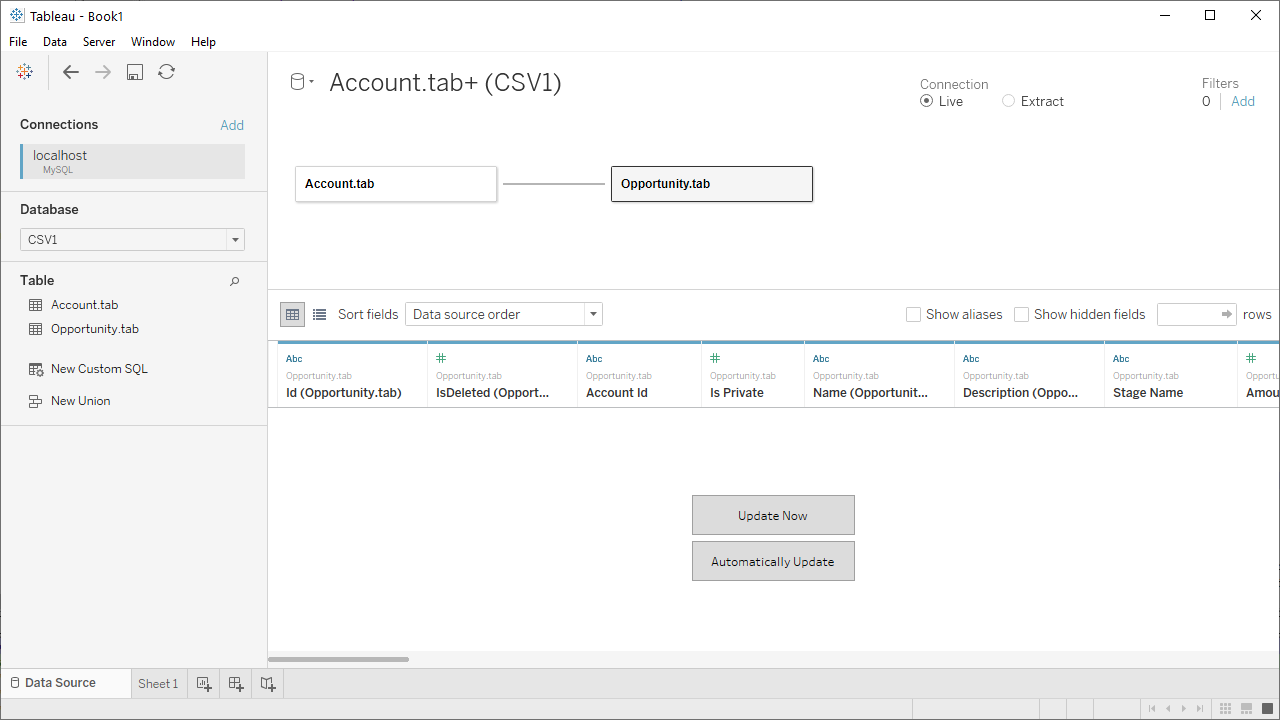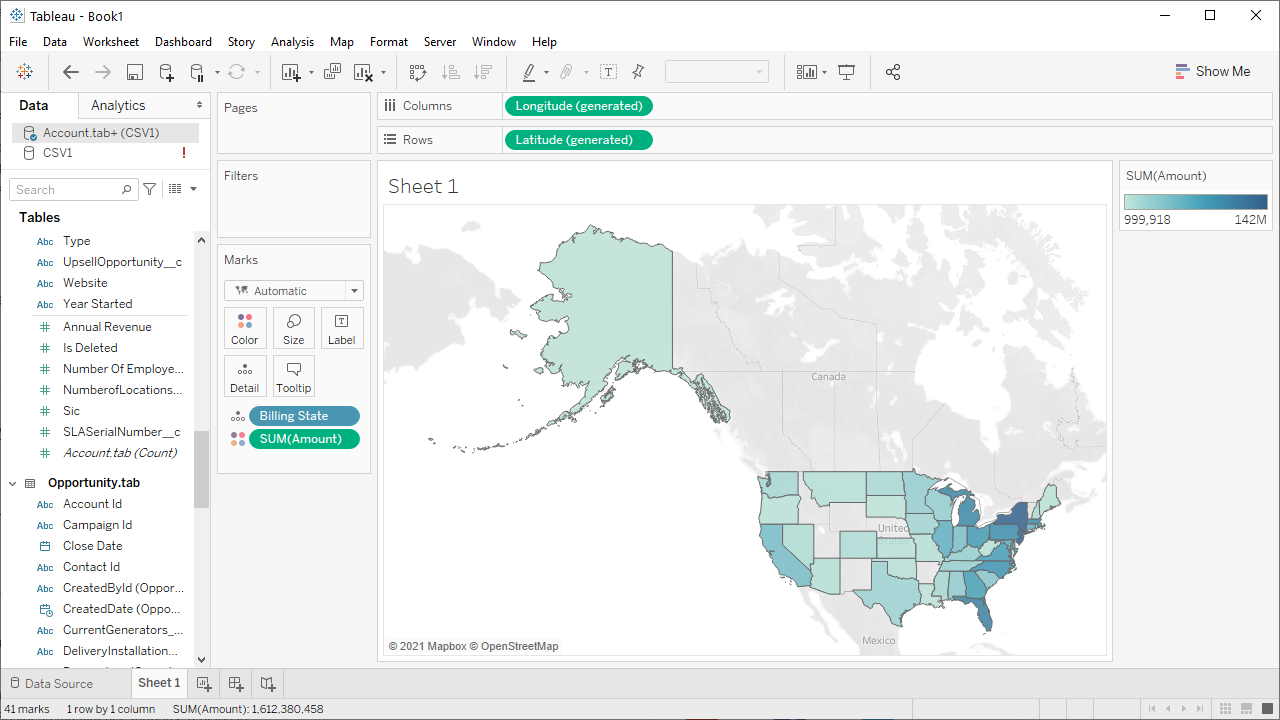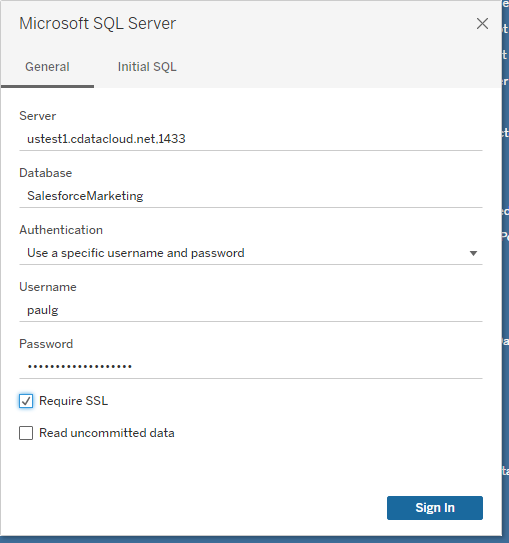Discover how a bimodal integration strategy can address the major data management challenges facing your organization today.
Get the Report →Visualize SAP SuccessFactors Data in Tableau Desktop (through CData Connect)
Create a virtual SQL Server database for SAP SuccessFactors data in CData Connect (or Connect Server) and build visualizations from live SAP SuccessFactors data in Tableau Desktop.
Tableau is a visual analytics platform transforming the way businesses use data to solve problems. When paired with CData Connect (or Connect Server), you can easily get access to live SAP SuccessFactors data within Tableau.
CData Connect Server provides a pure SQL Server interface for SAP SuccessFactors, allowing you to easily build reports from live SAP SuccessFactors data in Tableau Desktop — without replicating the data to a natively supported database. As you build visualizations, Tableau Desktop generates SQL queries to gather data. Using optimized data processing out of the box, CData Connect Server pushes all supported SQL operations (filters, JOINs, etc) directly to SAP SuccessFactors, leveraging server-side processing to quickly return the requested SAP SuccessFactors data.
This article shows how to create a virtual SQL Server database for SAP SuccessFactors, connect to the virtual database in Tableau, and build a simple chart.
Create a Virtual SQL Server Database for SAP SuccessFactors Data
CData Connect Server uses a straightforward, point-and-click interface to connect to data sources and generate APIs.
-
Login to Connect Server and click Connections.
![Adding a connection]()
- Select "SAP SuccessFactors" from Available Data Sources.
-
Enter the necessary authentication properties to connect to SAP SuccessFactors.
You can authenticate to SAP Success Factors using Basic authentication or OAuth with SAML assertion.
Basic Authentication
You must provide values for the following properties to successfully authenticate to SAP Success Factors. Note that the provider will reuse the session opened by SAP Success Factors using cookies. Which means that your credentials will be used only on the first request to open the session. After that, cookies returned from SAP Success Factors will be used for authentication.
- Url: set this to the URL of the server hosting Success Factors. Some of the servers are listed in the SAP support documentation (external link).
- User: set this to the username of your account.
- Password: set this to the password of your account.
- CompanyId: set this to the unique identifier of your company.
OAuth Authentication
You must provide values for the following properties, which will be used to get the access token.
- Url: set this to the URL of the server hosting Success Factors. Some of the servers are listed in the SAP support documentation (external link).
- User: set this to the username of your account.
- CompanyId: set this to the unique identifier of your company.
- OAuthClientId: set this to the API Key that was generated in API Center.
- OAuthClientSecret: the X.509 private key used to sign SAML assertion. The private key can be found in the certificate you downloaded in Registering your OAuth Client Application.
- InitiateOAuth: set this to GETANDREFRESH.
![Configuring a connection (SQL Server is shown).]()
- Click Save Changes
- Click Privileges -> Add and add the new user (or an existing user) with the appropriate permissions.
With the virtual database created, you are ready to connect to SAP SuccessFactors data from Tableau Desktop.
Visualize Live SAP SuccessFactors Data in Tableau Desktop
The steps below outline connecting to the virtual SAP SuccessFactors database in CData Connect and building a simple visualization from the data.
- Open Tableau and click "Microsoft SQL Server" under Connect -> To a Server.
- In the connection wizard, enter the values for your CData Connect instance and click "Sign In"
- Server: the address of your Connect instance and port of the TDS endpoint, separated by a comma (default port is: 1433)
- Database: the virtual database you configured for the SAP SuccessFactors data
- Username & Password: the credentials for a CData Connect user
![Connect to CData Connect from Tableau Desktop]()
- Select your newly created database and the table(s) you wish to visualize (defining relationships for JOINed tables as needed).
- Select Dimensions and Measures and configure your visualization.


SQL Access to SAP SuccessFactors Data from On-Premise Applications
At this point, you have a direct connection to live SAP SuccessFactors data from your Tableau Desktop workbook. You can create new visualizations, build dashboards, and more. For more information on gaining SQL access to data from more than 200 SaaS, Big Data, and NoSQL sources (including SAP SuccessFactors) from desktop applications like Tableau refer to our CData Connect page or download a free trial.









